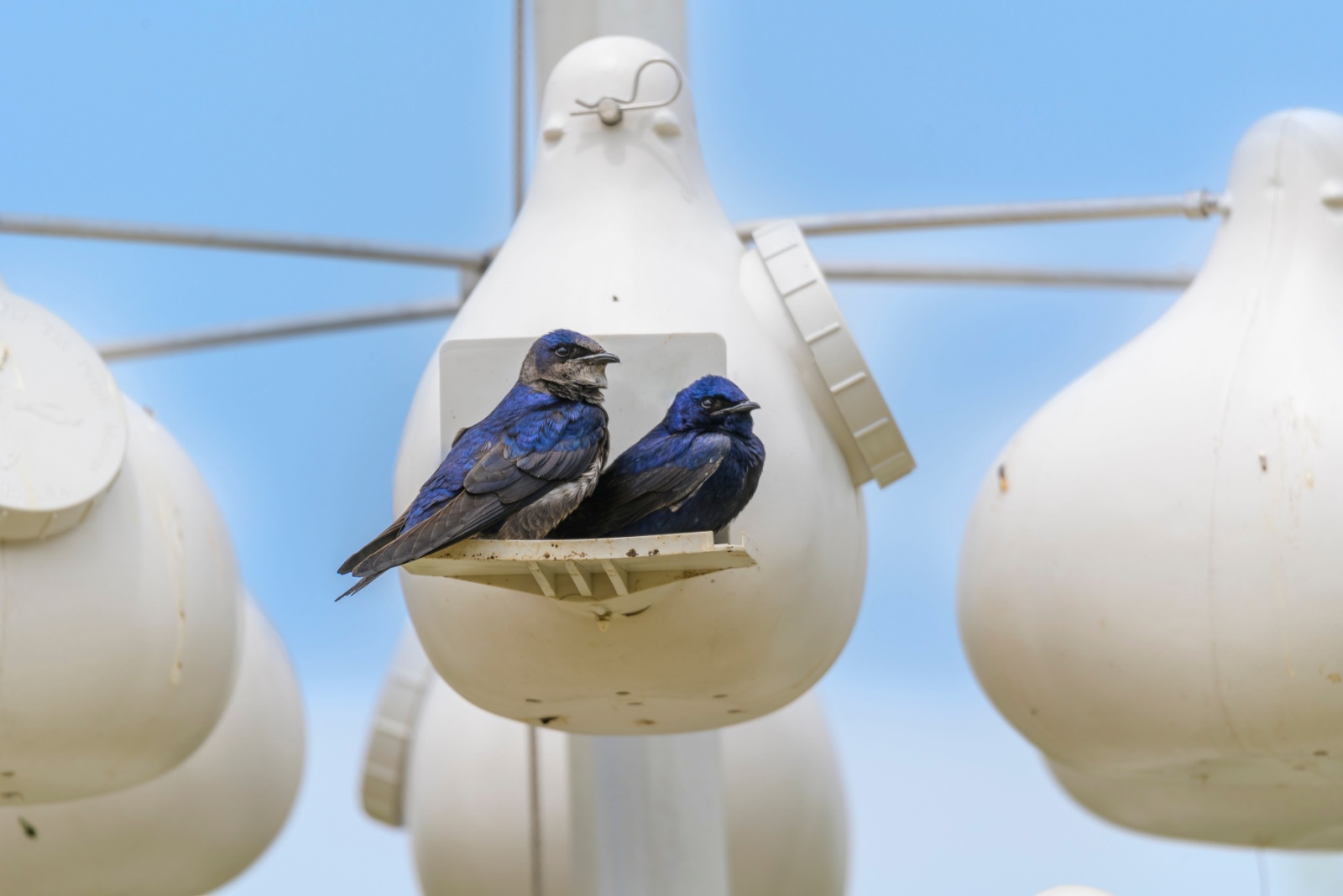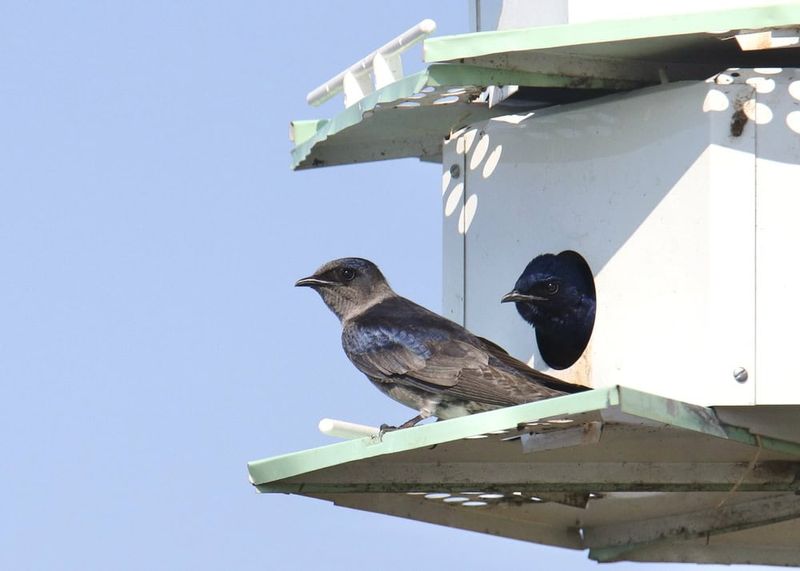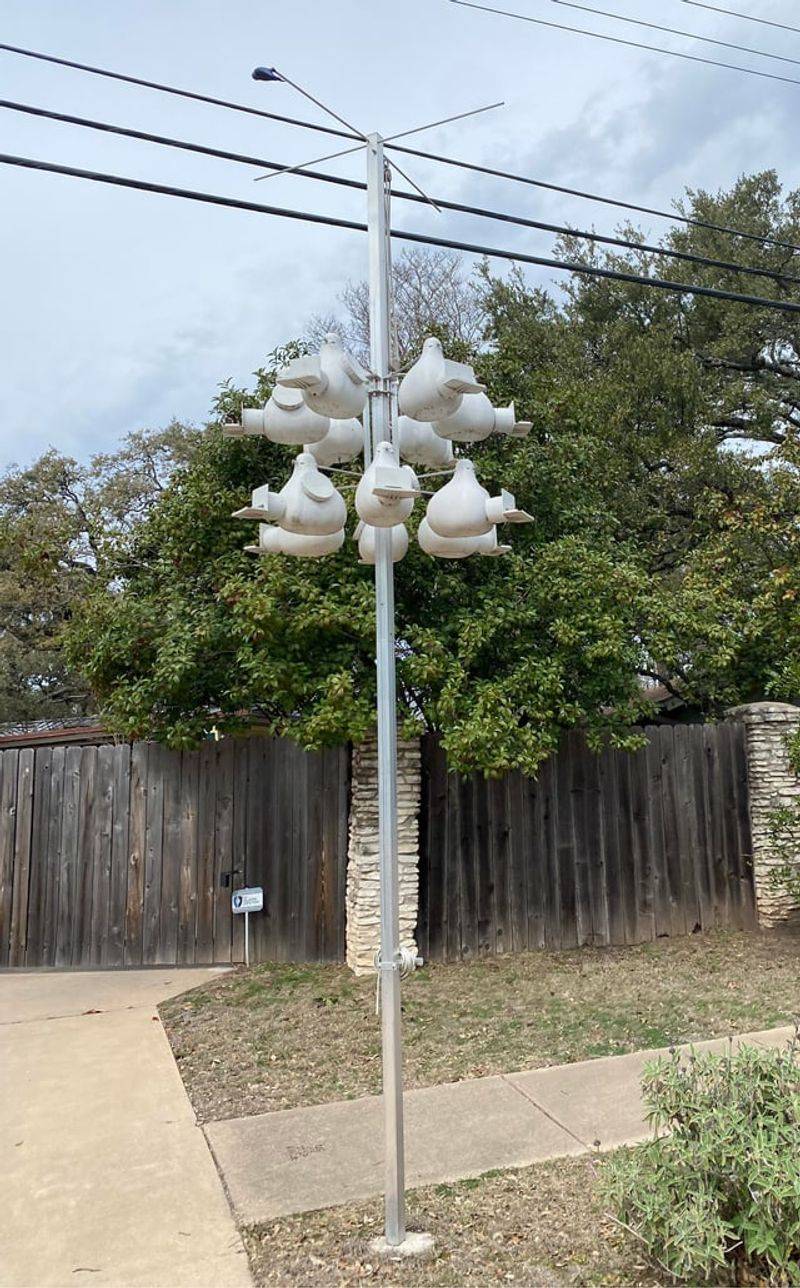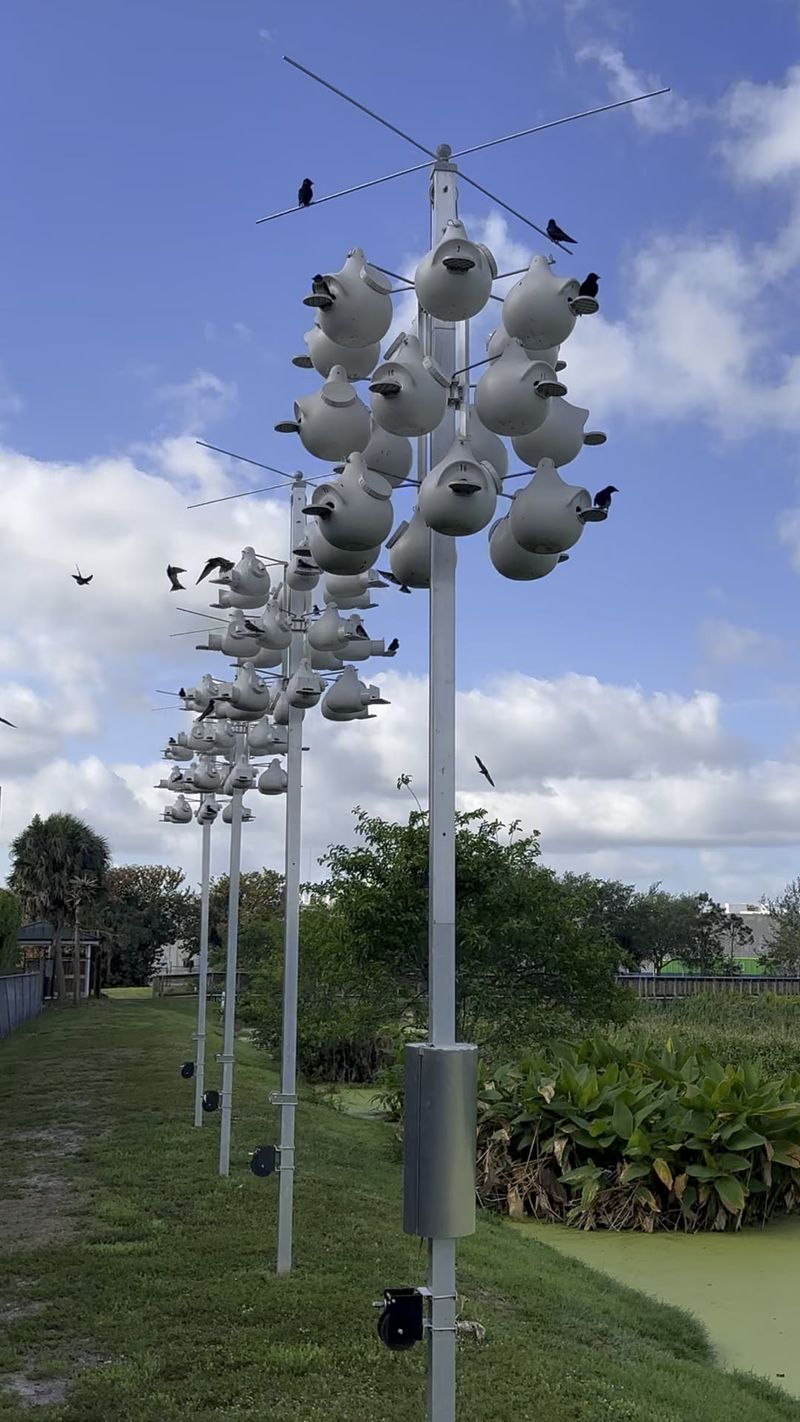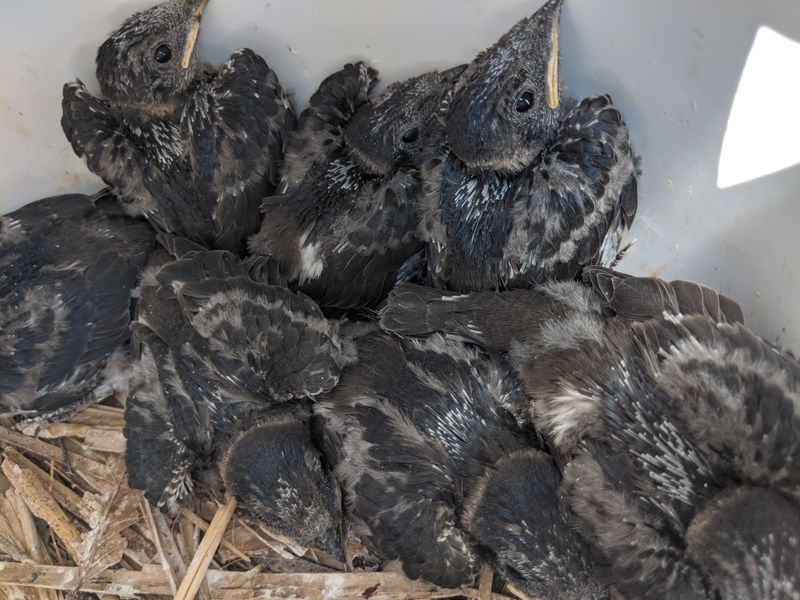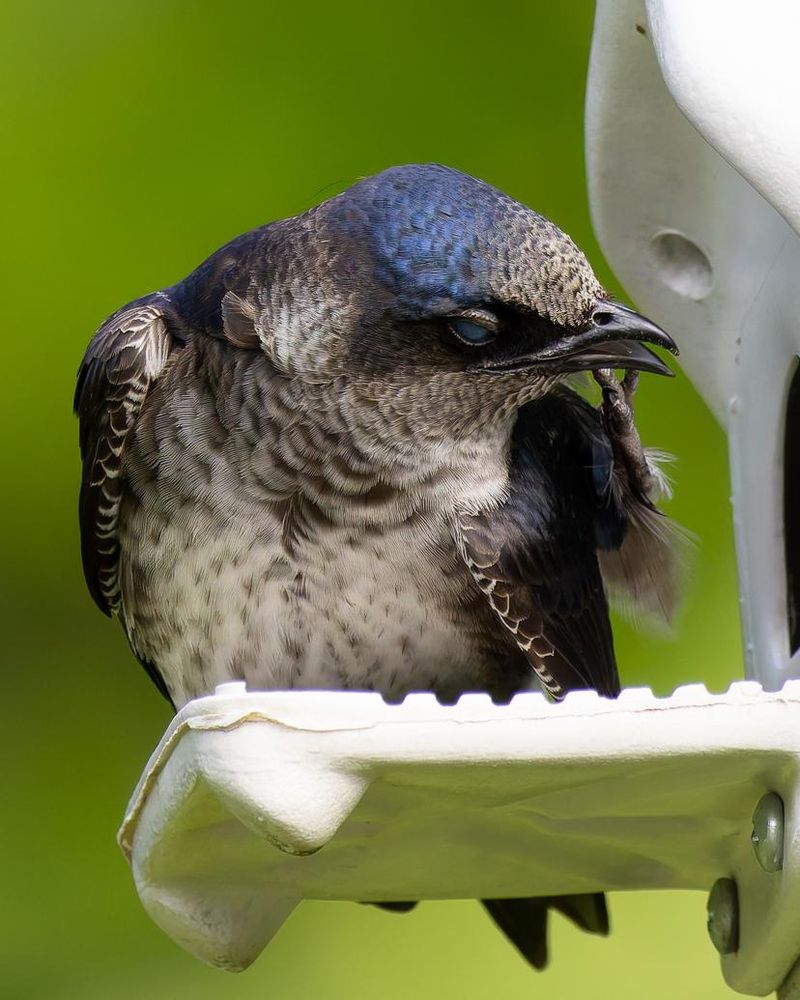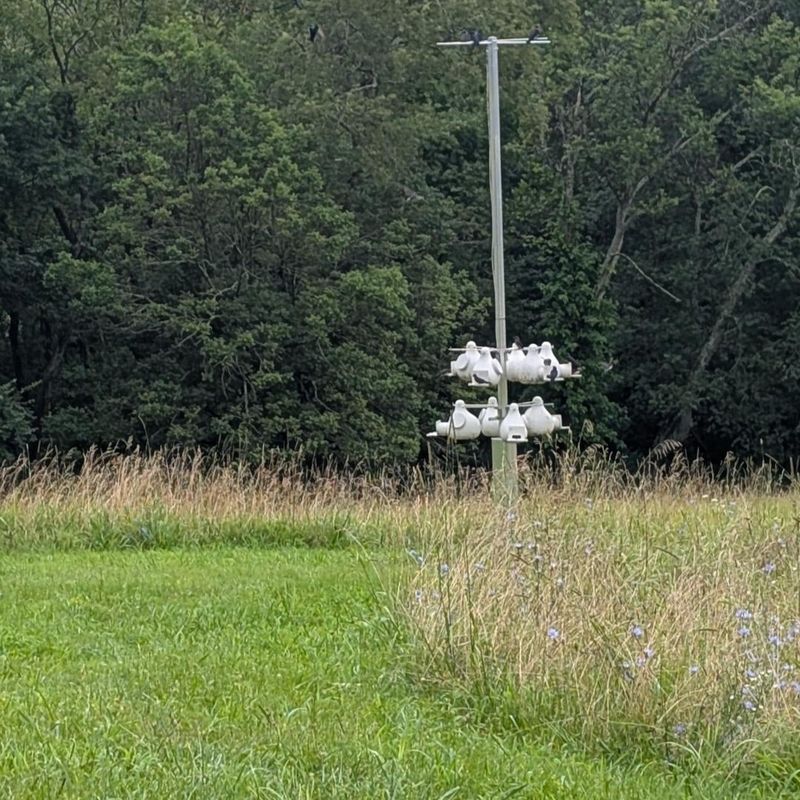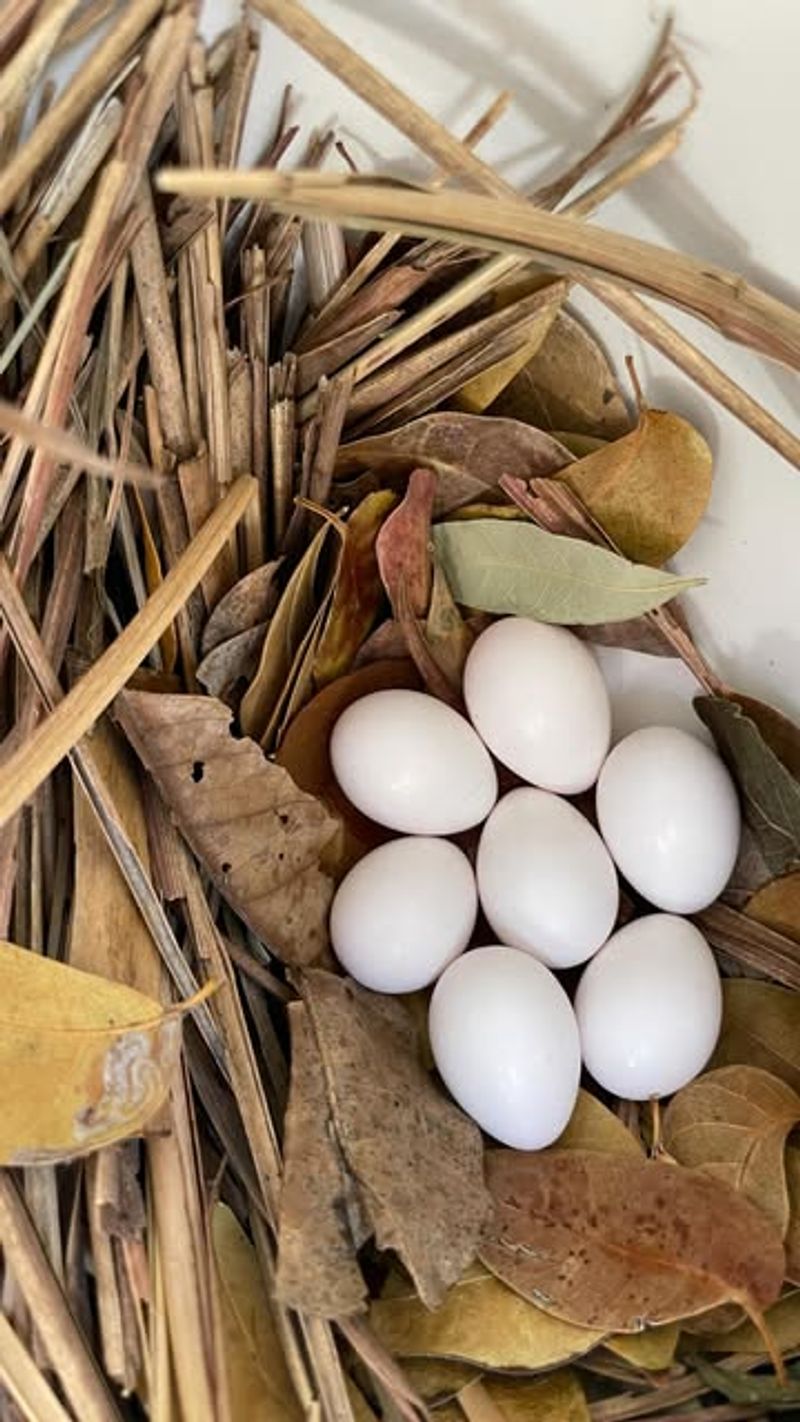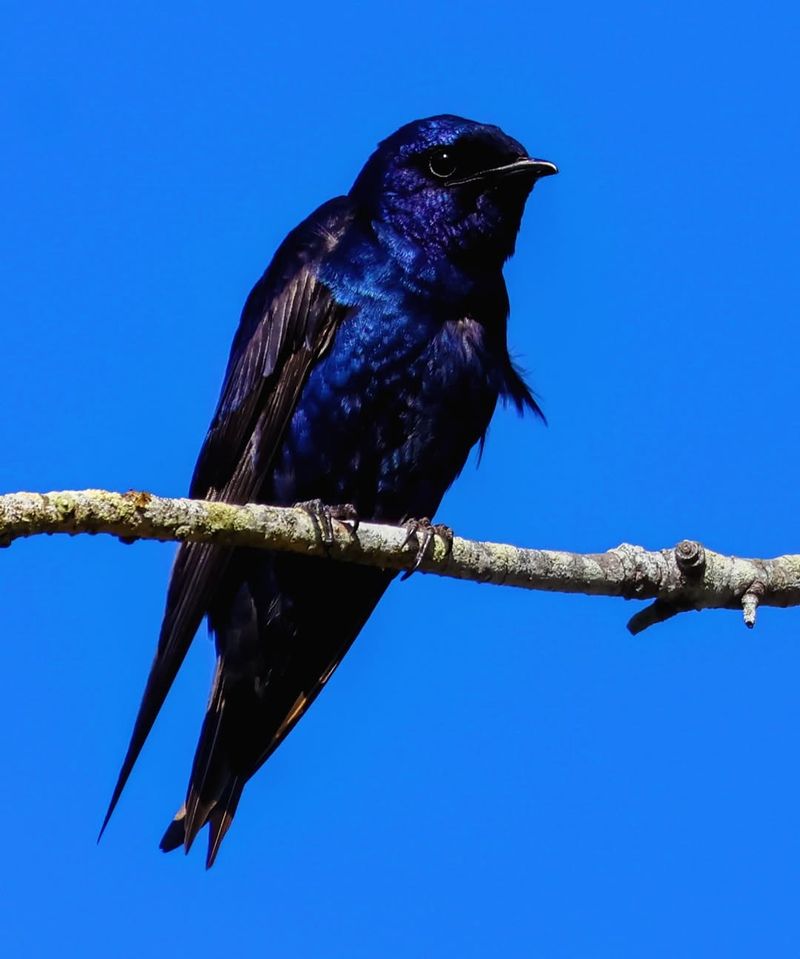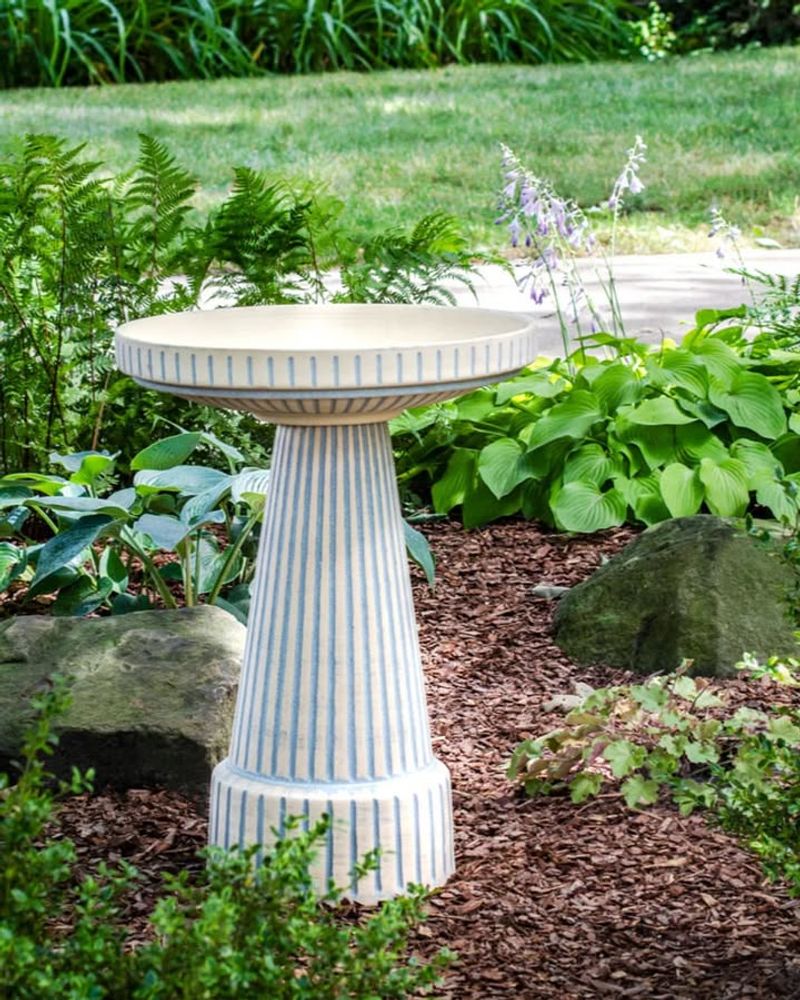Purple Martins are beautiful birds that bring natural pest control and cheerful songs to Florida backyards. These social aerial acrobats have a special relationship with humans, depending on us for nesting sites in much of eastern North America.
Getting these graceful birds to visit your yard takes some know-how, but the rewards of hosting a thriving martin colony are well worth the effort.
1. Install Housing That Martins Love
Martin houses should be mounted on poles 12-20 feet high in open areas. I’ve found that white multi-compartment houses work best in my Florida garden, as they reflect heat during our scorching summers.
The entrance holes should be 2⅛ inches in diameter – just right for martins but too small for starlings. My neighbor’s colony doubled in size after he switched to proper-sized entrances.
Clean out old nests each winter to prevent parasites. When I started doing this yearly maintenance, my returning martin families seemed healthier and raised more chicks each spring.
2. Create Open Flyways Around Housing
Martins need room to swoop and dive when approaching their homes. Placing houses at least 40 feet from tall trees creates the perfect flight path these aerial insect-eaters require.
Keeping the area open wasn’t intuitive to me at first. My first martin house failed because I installed it too close to my oak tree, thinking birds would appreciate nearby perching spots.
After relocating the housing to my lawn’s center, with clear approaches from all directions, martins finally showed interest. They seem to appreciate being able to spot predators from a distance.
3. Add Predator Guards To Poles
Raccoons, snakes, and squirrels love raiding martin nests. A simple metal baffle installed on the pole below houses creates a physical barrier these predators can’t overcome.
My first season without guards was heartbreaking – I lost an entire colony to nighttime raccoon visits. The metal cone I installed afterward has completely eliminated predator problems.
For extra protection, I keep poles at least 15 feet from structures predators might jump from. This combination of distance and barriers has given my martin families the security they need to return year after year.
4. Provide Nearby Mud Puddles
Martins use mud to build nest walls inside their compartments. During Florida’s dry spells, creating a shallow mud area can make your yard more attractive to these resourceful birds.
A simple plastic saucer filled with soil and water works wonderfully. I place mine about 20 feet from the martin house where I can watch the birds collect building materials.
The mud source should stay wet but not flooded. When I noticed martins struggling to find nesting materials during our spring drought, adding this feature immediately increased nesting activity in my colony.
5. Play The Dawn Song To Attract First Colonizers
Getting your first martins can be challenging. Playing recordings of martin dawn songs through a small outdoor speaker near your houses can work wonders for attracting passing birds.
The cheerful chortle sounds like a welcoming committee to migrating martins. I tried this approach after two empty seasons, and within days had my first curious visitors checking out the accommodations.
Early morning playback works best – just 30 minutes at sunrise during spring migration. In my Central Florida yard, I start in early February when scouts first appear, and it’s helped establish a reliable colony.
6. Time Your House Openings For Migration
Opening martin houses too early invites unwanted starlings and sparrows to claim compartments. In Florida, houses should be closed until just before martins arrive, typically early February in southern counties and late February up north.
My system involves plugging entrance holes with foam inserts until martin season. Last year, I opened half my compartments when I spotted the first scouts, then gradually opened more as the colony grew.
This controlled opening prevented non-native birds from taking over. Matching your timing to local migration patterns makes a huge difference – ask local birding groups when martins typically arrive in your specific area.
7. Maintain Insect-Rich Gardens Nearby
Martins feed exclusively on flying insects caught mid-air. Growing plants that attract beetles, moths, and dragonflies creates a natural food source that keeps martins well-fed and returning season after season.
Native wildflowers like coreopsis and salvia have transformed my yard into an insect haven. The martins circle above these plantings during evening feedings, performing impressive aerial displays.
Avoiding pesticides is crucial since they eliminate the birds’ food supply. My vegetable garden serves double duty – feeding my family while the companion flowers attract insects that feed my martin colony.
8. Offer Supplemental Nesting Materials
Beyond mud, martins appreciate soft materials for nest lining. Small piles of pine needles, dried grass, and small twigs placed on platforms near houses give birds easy access to building supplies.
The material station I built uses a shallow tray mounted on a post about 3 feet high. I’ve watched with delight as martins carefully select just the right pieces for their homes.
Fresh materials should be added regularly during nesting season. My Florida martins seem particularly fond of dried palm fronds cut into small strips – a local touch that makes use of materials already in my yard.
9. Create Community Through Neighboring Houses
Purple Martins are highly social birds that prefer living in colonies. Adding multiple houses or gourds increases your chances of attracting these community-minded birds to your property.
Starting with one house and expanding gradually has worked well for me. After my initial six-compartment house filled up, I added another nearby, which quickly attracted additional pairs.
Spacing houses about 15-20 feet apart creates the perfect colony setup. My Florida martin community now spans three separate houses, creating a fascinating bird neighborhood that’s become the highlight of my backyard wildlife viewing.
10. Provide Fresh Water Features
Martins appreciate water for drinking and bathing, especially during Florida’s hot months. A simple birdbath with gradually sloping sides allows martins to wade in safely for refreshing dips.
Moving water attracts them more effectively than still pools. The small solar fountain I added to my birdbath last summer immediately increased martin visits during the afternoon heat.
Keeping water clean and fresh is essential. My maintenance routine includes changing water every other day and scrubbing the basin weekly to prevent algae buildup – effort that pays off when I see martins swooping down for quick sips between flights.

